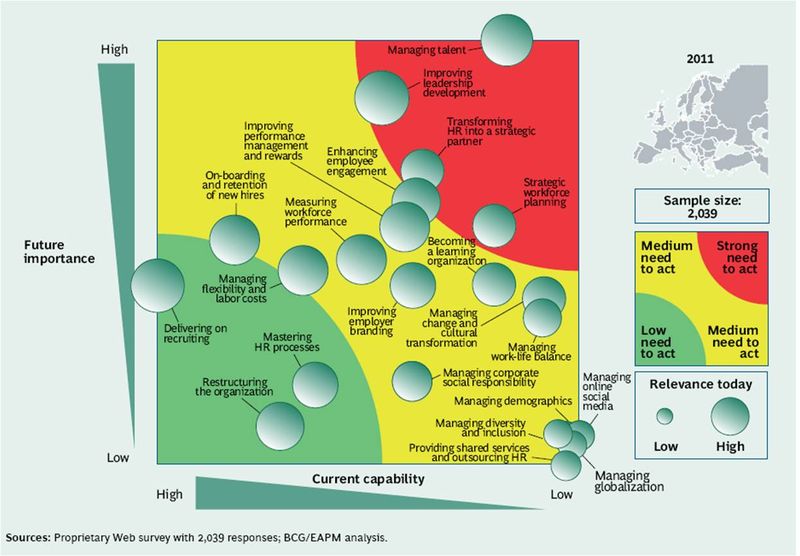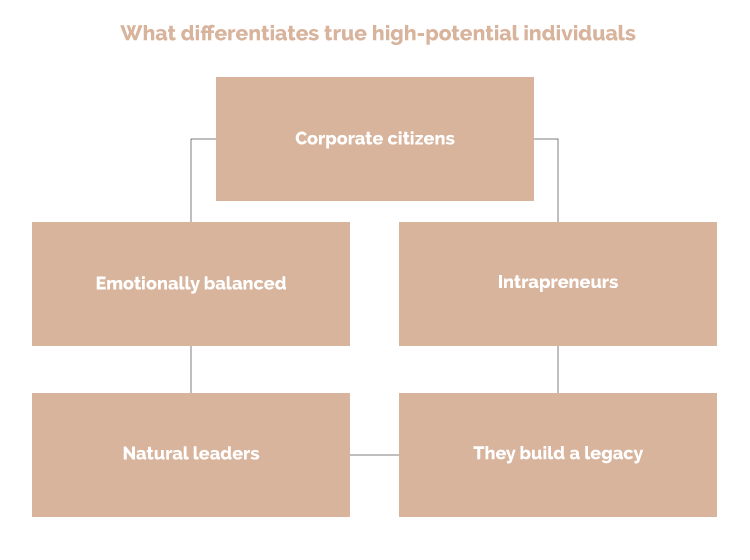‘What differentiates true high-potential professionals’ – David Reyero – Humannova – July 2014
According to leading international studies, the management of talent and leadership development has, in recent years, become one of the 3 main strategic focuses in managing people, together with the innovation/management of change and cost efficiency/optimization.
This is reflected in numerous reports, such as “Creating People Advantage 2013” by the Boston Consulting Group. This report shows strategic HR priorities for the coming years in the context of Europe and compiles responses supplied by 2,300 managers of leading companies.
A fundamental element in talent management is to identify and properly manage future high-potential or critical staff, regardless of the company’s size or sector and the level of professionalism involved in the process. Such professionals are logically requested to take on the majority of intermediate or management posts and, consequently, all success or error scenarios will have a highly significant impact on the company’s results and reputation.
In their talent identification systems, most organizations include elements such as the assessment of capabilities, results, the level of commitment and ambition or agility to learn, combined in a personalized way on the basis of each company’s strategy and culture. All these factors are important and are a necessary but insufficient condition. I am familiar with many cases of high-potential professionals who, despite excelling in such tangible aspects, were resounding failures when taking on executive roles, especially in high-complexity contexts. Some frequent causes were attributable to a deficit in key aspects such as integrity in decision-making, attitude or emotional intelligence.
In the present article, and on the basis of my experience, I will focus on the values that distinguish “true high-potential professionals “, aspects that make a difference in long-term outcomes, but to which, in my opinion, the most habitual systems of potential assessment do not tend to pay sufficient attention,.
In the figure below I have identified a set of key points that distinguish such types of professional:
–Natural leaders are “informal leaders” regardless of their position and have a high capacity for transformation, enthusiasm and credibility among peers. They are examples for their colleagues, who naturally approach them in search of advice, support, or constructive challenge. They understand leadership to be a strong component of service to others and with a sense that transcends their own individual short-term benefit.
– Emotionally balanced, which is reflected in their high level of self-awareness, self-confidence, humility and intuition, which are key factors to successfully manage power, conflict and uncertainty. They periodically seek honest multifeedback as to strengths and improvements and a healthy ambition to achieve positive and constant self-questioning with a view to continuous betterment.
–Corporate citizens have the mentality of “good managers” with a powerful global vision in the short, medium and long term. In all their daily decisions they successfully balance their personal interests with the interests of the Organization as they believe that “the better things go for my company, the better for me.”
-Intrapreneurs: continuously pose new constructive challenges in business and people development, and show great enthusiasm when leading or participating in all kinds of different projects as they are convinced that “the more you share, the more you’re worth. ” They have no fear of failure or success and have a high resilience and capacity to achieve support to effectively manage potential internal resistance. They combine their strong implication in internal company affairs with a clear openness to the outside world in all areas in order to extract new ideas and to challenge their own.
–They build a legacy, focus on the essence of their day-to-day work at each stage of their professional career and make a difference and leave their mark without arrogance or fishing for individual medals, attempting to achieve the best collective contribution for the good of the Organization.
By way of conclusion, I believe that to deeply assess the human profile of leaders and the alignment of their personal values with corporate values is a complex issue, but it is increasingly fundamental in the management of high-potential professionals and, in general, in the context of promotions to positions of responsibility.
To work in this direction will have two beneficial effects. On the one hand, to position leaders at various “high human potential and emotionally balanced” organizational levels” will facilitate the achievement of results in a context in which we require the most from each of our employees. On the other hand, it will serve to reduce inconsistencies between the “official” culture (corporate values) and the “real” culture (the daily conduct of leaders), an issue that has a highly negative impact on the credibility of Organizations and the level of commitment of their employees.



Leave a Reply